Slingshot Refraction Vs Asylum - Versus w/Rygo
Kiteboards are often treated as an afterthought next to kites but that's a huge mistake. There are a ton of variables in every kiteboard and it makes a huge difference on the water.
As far as kiteboard construction goes, Slingshot has been on top of the game since the very beginning. From their hand-crafted construction to their clever shapes. In 2018 they have a solid line up with each kiteboard catering to and crossing over into different styles of riding.
It can be a little confusing sorting what kiteboard is right for you. This week we're going to break down the Slingshot Asylum Vs The Slingshot Refraction.
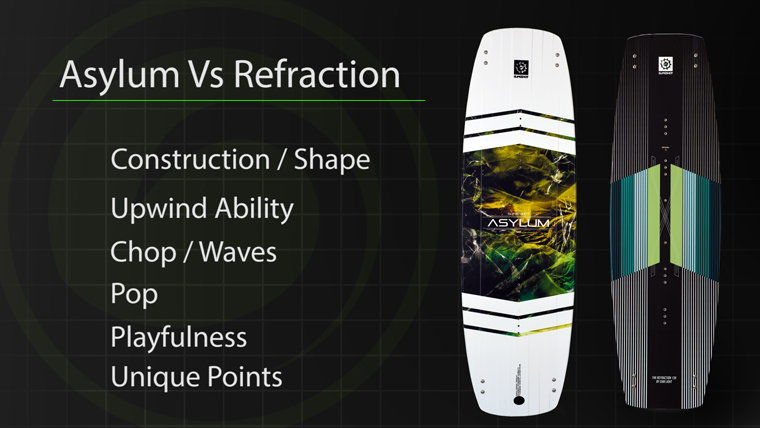
At first glance, both of these kiteboards look like wakeboards and to a fault that is true.
While they look similar they are quite a few difference between these two boards that I’d like to go over today.To stay consistent I’ll be breaking board videos down into 6 points to consider
- Construction, shape and rider type
- Upwind ability
- Chop and waves
- Pop
- Playfulness
- Unique points of interest
Construction
If you watched my previous videos on boards, you might remember some of the basic concepts we covered from rocker line to construction. Now, both of these boards are similar in build. They both have a wood core and are fiberglassed in a pneumatic press. This means you can expect them to have a damp feel on the water. Meaning, they will absorb vibration much better making a more comfortable ride. While the stiff flex of these boards helps maintain a somewhat lively albeit, not the most reactive feel in contrast to say a carbon kiteboard.
Refraction
The major difference here is that the Refraction has more concave and is a heavier more durable board. Its main purpose is for wakestyle kiteboarders looking to ride powered, hit the park and beat up on their board. This is nice for kiteboarders like myself that like to ride up on the beach or those that frequent rock covered beaches. The Slingshot Refraction is a bit more niche and definitely has a certain rider in mind.
Asylum
Conversely, the Asylum while still having the same mild rocker line is a much flatter, faster, more freestyle minded board. What you’re going to get is a kiteboard that is built for a broader audience. From kiteboarders looking for a performance freeride board to a high-performance freestyle board with massive pop. The shape of this board makes it incredibly efficient and a bit of a firecracker.
Upwind ability
The first point to consider would be upwind ability. Between these two, hands down, the Asylum is going to ride upwind better. The rocker lines on these boards are almost identical but due to the shape and concave, the Asylum is a flatter board than the Refraction. The channels on the bottom also give it more grip and make it a better tool to get upwind. This is a common attribute to look for in a board if the upwind ability is most important to you. There is always a balance between rocker, concave and channels.
Chop and waves
Something else to consider when looking at kiteboards is how well they perform in the chop and in the waves. Between these two, the Asylum pops better in the chop but the refraction is going to feel better on your body.The Refraction is also going to work better in the waves.
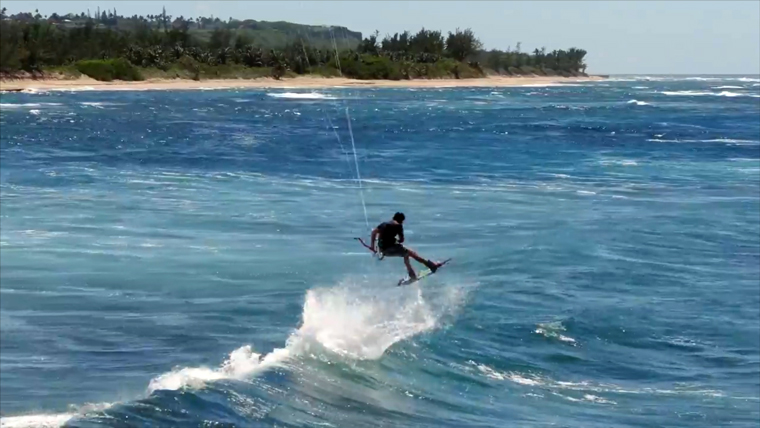
Probably the most stylish kiteboarder alive, Sam Light sends it off waves on his 2018 Slingshot Refraction
Now, what I mean by this is you can expect more efficacy regarding pop and upwind ability from the Asylum in chop due to its shape, the Reactions is going to be softer on the body in these conditions. As well, the Refractions shape is going to lend to a more maneuverable board when riding in the waves. With a buttery feel and a quicker response due to the concave. It has a less locked in feel opposed to the Asylum that has a more track like, locked in feel. And that's not to say the Asylum is a beast of burden. Its just got a bit more grip and this is for sure a personal preference.
Pop
You might recall me talking about how often the flatter the board the more speed you can generate, therefore, the more pop. And this is where things get interesting.
There are a lot of factors that contribute to pop and different techniques to consider. If you’re the type of rider who relies on board speed, the Asylum is the winner, now that said, if you like to ride powered up, and rely on your kite for pop, you might want to consider the Refraction. It’s shape actually makes controlling the kite better and makes it easier to generate slack.
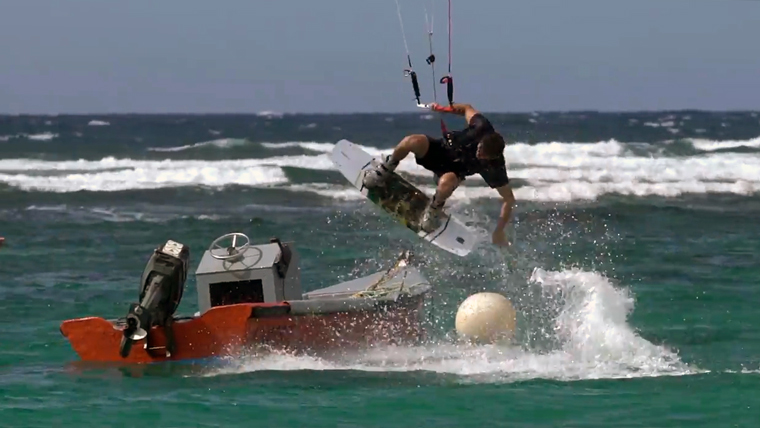
Alex Fox is one of the more creative riders out there always interacting with his environment.
Both of these boards have a great release off the water and a certain feel that’s unique to slingshot. I don’t know how to articulate this but if you’ve ever ridden one. You know what I’m talking about. They have this sense of responding quickly when you edge but there is a disconnect to the water. I mean in a good way as they do a great job with not beating your knees up in the chop.
I should note, that they both pop great but I find there is an advantage to the Asylum. Especially in lighter conditions. Once you become more experience, you’ll have no problem popping with a rockered board but if you’re a novice, sometimes it’s nice to have a kiteboard that will make your life easier like the Asylum.
Playful
Something else that’s important regarding boards is the way it feels on the water. From the way it turns to the way it lands after a jump.
Refraction
The Refraction has more concave, smaller fins and is a much more playful board with softer landings, it’s easier on the body in the chop, and like I said, these attributes make it ideal for getting creative in the waves. The faster buttery feeling turns make it a better tool if you like to play in the waves on your twin tip. This Slingshot refraction does have some mild channels built into it so it’s not going to be slippery like some boards but between these two it’s going to have a looser feel.
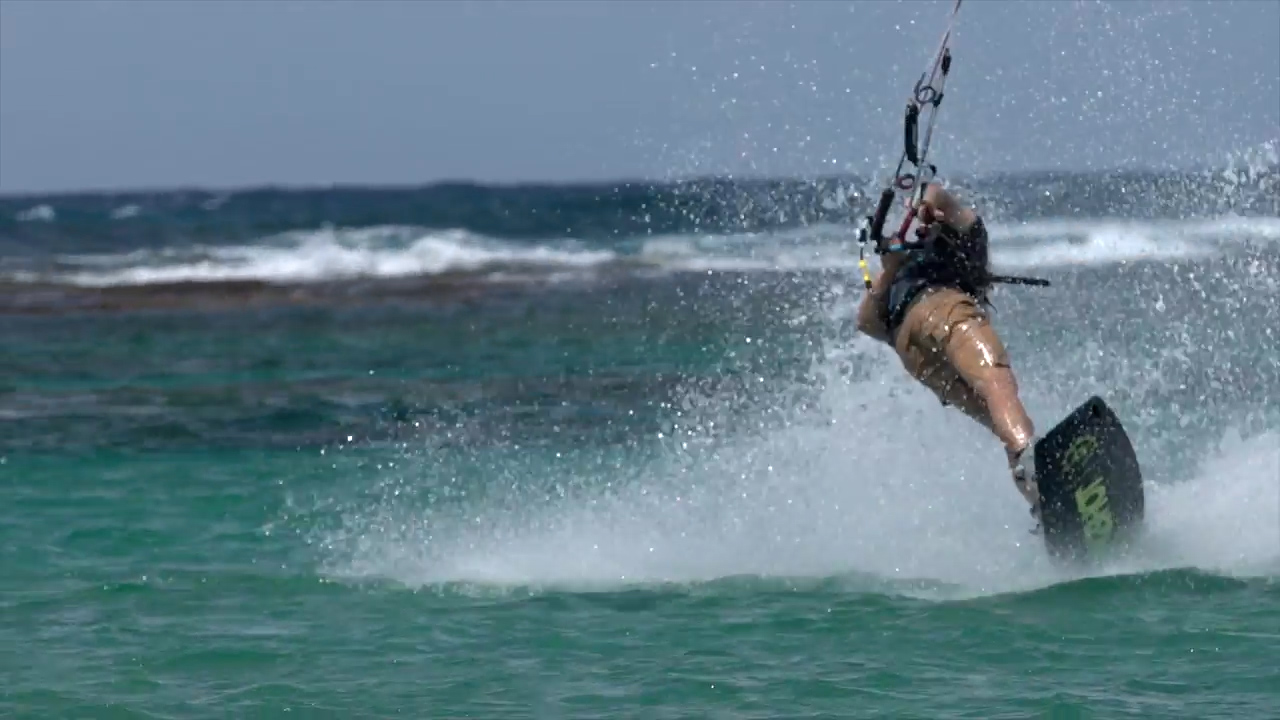
The Refraction has a loose more forgiving feel giving you an edge when landing new tricks.
Asylum
Conversely, the Asylum will feel more locked in.The flatter shape of the board, the rocker line, the channels and the larger fins all play a role in this. You can loosen this board up by putting on smaller fins and that is how I prefer to ride it. There are benefits to both and that comes down to how you ride.
You can tweak either of these boards or any board really by changing up your fins too.
- Bigger fins equal more grip and more pop.
- Smaller fins make for a looser more snowboard-like feel and more forgiving landings.
As far as freestyle boards go, the Asylum has tons of pop and it took me a minute to get used to how explosive this board really is. The mild rocker line in this board is meant to soften up the landings and compared to some freestyle boards, this is true but I did find it more noticeable than riding the Refraction or any rockered board for that matter.
You’ll want to make sure that you bend your knees and absorb the impact when riding powered on this board. The explosive pop is a fair trade off and like I said, they have done a good job and balancing out pop and softer landings on the Asylum but it’s still a freestyle board.
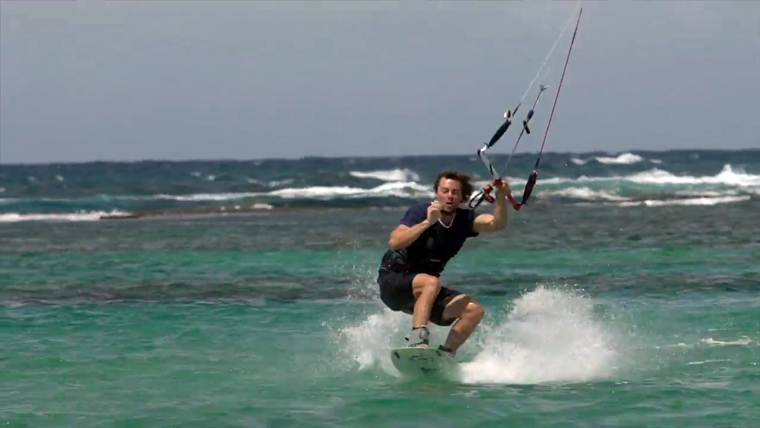
The Asylum has softer landings compared to many freestyle boards.
Points of Interest
That last thing to consider is unique points of interest. Both of these boards come from the same manufacturer so there is nothing too crazy between them, however, like I said, they are designed with different riders in mind.
Refraction
It has a more durable base made for hitting sliders and kickers. Something else unique about the Refraction is inverted tip and tail profile so make it harder to catch an edge while doing presses. I also find boards like this to be more forgiving when trying new tricks as it’s a little harder to catch an edge on them with the playful shape and the concave.
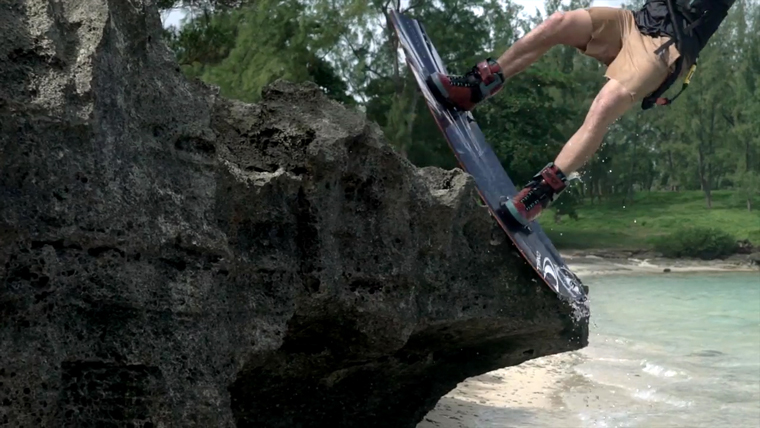
The durable base is nice when you're rough on your gear.
The Refraction makes a decent wakeboard too. We’ve actually put this board to work behind the boat and at our local cable park and it's one of the few kiteboards out there that crosses over nicely. It's not going to be the best boat or cable board but works surprisingly well. The speed makes loading the cable more difficult for air tricks but on the flip side, it's nice on the arms and it makes a great travel option if you're flying to a kiteboarding destination with a cable park.
Asylum
The Asylum stands out as one of the more user-friendly freestyle choices out there. Whether you are a newer rider or looking to compete, this board is going to deliver and make progression easier with all the benefits of a forgiving high-performance board. It's actually an unsung hero as far as freestyle boards go. You don't hear a lot about it but it's one of the better freestyle boards out there. To get some bias out of the way this was my choice board for the 2017 season.
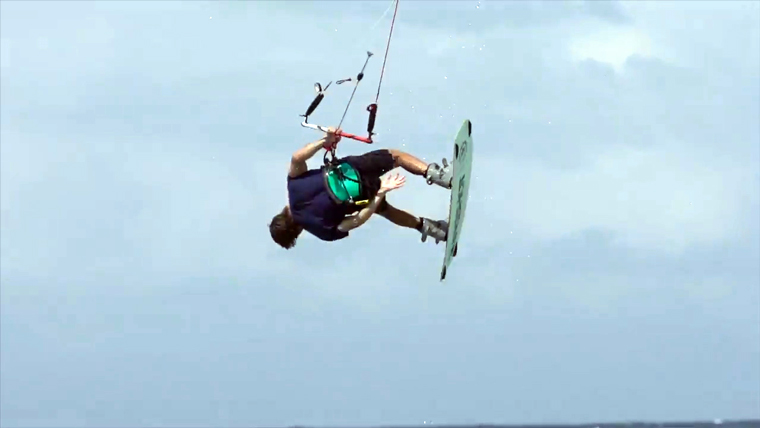
Consider the Asylum if you dream of flat water lagoons and handle passes for days.
The takeaway
The main takeaway here is the Refraction has the wakestyle/ park rider in mind. It’s a niche board with a specific kiteboarder in mind. It’s built to hit sliders and take a beating. If you’re the type of rider looking for one board to use for both sports, this is a great choice.
It’s also going to be a better choice if you’re rough on your gear or you're willing to sacrifice a little pop for a softer landing and a more playful ride. That said, there are other choices you might want to consider if a soft freeride board is what you are after.
Now, the Asylum, it’s a more well-rounded tool in my opinion and it was actually my choice shop board for the 2017 season. It’s going to ride upwind better, pop better with board speed and makes for an efficient fun tool. It’s not as durable as the refraction and the landings can sometimes be rougher.
It’s up to you to decide what board is going to meet your needs and if you have any questions, you can always give us a call to talk it out.
800-622-4655.
 Ryan (Rygo) Goloversic
Ryan (Rygo) Goloversic
Many people dream of quitting their job, traveling the world and pursuing their passions. Rygo is one of those people who pulled the trigger. About eight years into a postal career, he decided to change everything and travel as a freelance videographer & writer. This took him from coast to coast and a variety of countries. Nowadays you can catch him on the phones, doing lessons, or working on videos. Of course, he still makes a point to travel as often as possible. He is passionate about helping people and sharing the stoke with his customers and students alike.
Recent Posts
-
Kiteboarding | Crafting the Harlem Force Kite with Sustainability and Performance
Unparalleled Performance Meets Unmatched Sustainability The kiteboarding industry is on …24th Apr 2024 -
Duotone Ventis 2025 | What's New?
If you're familiar with Duotone's Ventis, you know its specialty is freeriding in light wind …23rd Apr 2024 -
Duotone Ventis D/LAB 2025 Overview
If you ride in an area with multiple light wind days and need a wing that'll let you get o …23rd Apr 2024



